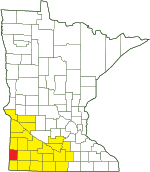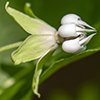Split Rock Creek State Park
About • Location • Activities • Ecology
About |
Ownership |
|
Links |
Overview |
|
History |
|
Management |
|
Comments |
|
Activities |
||||||||||||
Hiking Biking Mountain biking Horseback riding Picnicking Camping Backpacking Rock climbing and bouldering Swimming Boating Canoeing Birding Nature photography Geocaching Cross country skiing Skate-skiing Winter hiking Snowshoeing Snowmobiling |
||||||||||||
Trails |
||||||||||||
|
||||||||||||
Hunting and Fishing |
||||||||||||
No hunting. The park may hold one or more managed hunts in the fall. In most cases, Minnesota residents do not need a permit to fish in Minnesota State Parks. |
Ecology |
|||||
Ecological Classification |
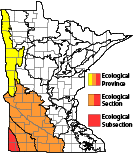 |
||||
| Ecological Province | Prairie Parkland Province |
||||
| Ecological Section | North Central Glaciated Plains |
||||
| Ecological Subsection | Inner Coteau |
||||
| Land Type Association | Beaver Creek Till Plain Blue Mounds Trosky Till Plain |
||||
Native Plant Communities* |
|||||
Crystalline Bedrock Outcrop (Prairie): Sioux Quartzite Subtype Dry Hill Prairie (Southern) Mesic Prairie (Southern) |
|||||
| * Source: The Minnesota Biological Survey, Minnesota Department of Natural Resources, Division of Ecological Resources | |||||
Natural Features |
|||||
|
|||||
Visitor Photos |
||
Share your photo of this destination. |
||
This button not working for you? |
||
|
||
|
||
MinnesotaSeasons.com Photos |
||
|
||
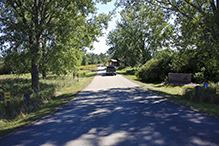 |
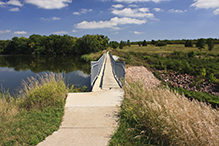 |
|
Park entrance |
Split Rock Lake Dam | |
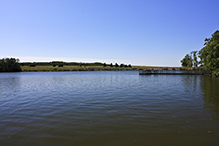 |
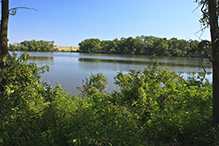 |
|
Split Rock Lake |
||
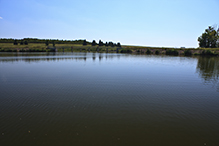 |
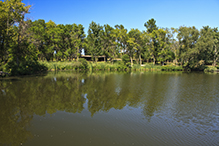 |
|
Split Rock Lake |
||
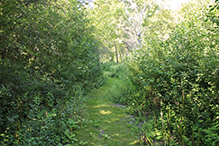 |
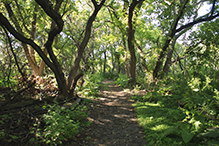 |
|
Trails |
||
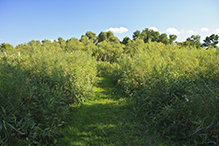 |
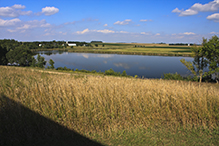 |
|
Trails |
Dry Hill Prairie (Southern) | |

Slideshows |
Split Rock Creek State Park |
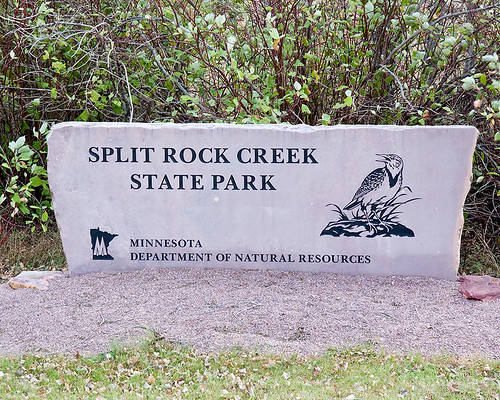
|
About
Split Rock Creek State Park, MN |
Great Minnesota Parks: Split Rock Creek State Park |
About
Published on May 29, 2014 Split Rock Creek State Park is featured. Connect with us on Facebook: http://www.facebook.com/pioneerpublictv For more information about Pioneer Public TV, including how you can become a member, go to http://www.pioneer.org. Additional Pioneer productions can also be viewed online at http://video.pioneer.org. |
Split Rock Creek State park Minnesota |
About
Published on Feb 10, 2014 I created this video with the YouTube Slideshow Creator |
Split Rock Creek State Park, Minnesota |
About
Published on Oct 30, 2013 Favorite Sites: 2, 3, 4, 6, 9, 23, 25, 27 |

Visitor Videos |
||
Share your video of this destination. |
||
This button not working for you? |
||
|
Other Videos |
||
S2:E6 SPLIT ROCK CREEK STATE PARK, Minnesota (06.20.2019) Old Dad Revival |
About
May 25, 2020 Split Rock Creek State Park is the home of Prairie Hill which has never been cultivated and still features all of the native plants and flowers of Minnesota, just as it has for hundreds of years. The man made lake was created in 1938 what he WPA built the Split Rock Creek Dam. It is a great place to relax and unwind as we did in June of 2019. MN Department of Natural Resources Split Rock Creek State Park: In 1937 a petition was started to save the native grasslands around Prairie Hill. It has never been cultivated and features plants and flowers native to Minnesota. The park staff monitor the hill and remove any invasive species that might find their way in to the mix. The flowers provide a bouquet of changing colors with the seasons. The Well House on top of Prairie Hill is the highest point of the park and provides an amazing view over the lake. In 1938 the WPA completed the split rock creek damn creating a man made reservoir which became the only lake in Pipestone county. The historic stone arch bridge located just outside of the park and next to the dam was also built by the WPA and is listed on the National Register of Historic Places. There’s about a 2.5 mile loop of hiking trails which are mostly flat and make for an easy hike. However, if you are looking for somewhere to ride your horse there are approximately 9 miles of horse trails which includes a river crossing. During the summer months there is a very nice beach and two playground areas. The campground features Electric and non electric sites, there is fresh water to fill up with and a dumping station to empty your tanks. While there we stayed at site 14e, which is a wooded site and we found we had excellent cell coverage with our T-Mobile service. If you are looking to explore outside of the park we suggest a trip over and stop at the stone arch bridge which provides another great view of the dam. Continuing South along that road you will bring you to one of the parks most interesting neighbors featuring a farm of farm windmills. Venture 7 miles North of the park and you can visit the Pipestone National Monument. Follow us on our Social Media: |
Hiking at Split Rock Creek State Park in Minnesota - S1:E6 |
About
Sep 8, 2020 We traveled West to Split Rock Creek State Park for this week's Park Adventure. There is certainly plenty to do at this park to keep you busy for a fun weekend camping experience. Pipestone, MN is a short drive from the park and there is even more to do there, (A video from Pipestone National Monument coming soon!). Some of the things you can do like rental equipment, the fish cleaning house, and what looked like the visitor center were closed due to Covid, but there were many other things open. Join us as we explore and enjoy! Thanks for watching! Don't forget to like and Subscribe! |
Split Rock Creek State Park |
About
Dec 12, 2020 Our Minnesota state park travels lead us to this little state park in southwest Minnesota. |
Video Blog: Split Rock Creek State Park |
About
Published on Aug 29, 2013 Video blog on site at Split Rock Creek State Park to air as a segment of an upcoming episode of Great Minnesota Parks. To learn more about the show and watch past episodes visit: http://www.pioneer.org/minnesotaparks |

Visitor Sightings |
|
Share your sightings or comments about of this destination. |
|
This button not working for you? |
|
MinnesotaSeasons.com Sightings |
Visits |
9/9/2011 8/27/2013 |
Birds |
||||||||||||
|
||||||||||||
American Goldfinch (Spinus tristis) Barn Swallow (Hirundo rustica) Canada Warbler (Cardellina canadensis) Common Nighthawk (Chordeiles minor) Eastern Kingbird (Tyrannus tyrannus) |
||||||||||||
Fungi and Lichens |
||
American Tar Spot (Rhytisma americanum) |
 |
|
Insects and Arachnids |
||
|
Carolina grasshopper (Dissosteira carolina) dog day cicada (Neotibicen canicularis) goldenrod bunch gall midge (Rhopalomyia solidaginis) orange sulphur (Colias eurytheme) Walker’s cicada (Neotibicen marginalis) |
||
Mammals |
||||||||
|
||||||||
American beaver (Castor canadensis) |
 |
|||||||
Plants |
||||||||
|
||||||||
Minnesota Biodiversity Atlas and Minnesota Biological Survey Vegetation Releves Plant List |
||||||||
Plants frequently found in: Crystalline Bedrock Outcrop (Prairie): Sioux Quartzite Subtype ROs12a2 |
||||||||
|
absinthe wormwood (Artemisia absinthium) American black currant (Ribes americanum) American burnweed (Erechtites hieraciifolius var. hieraciifolius) American elderberry (Sambucus canadensis) American lopseed (Phryma leptostachya) American stickseed (Hackelia deflexa var. americana) American stinging nettle (Urtica gracilis ssp. gracilis) asparagus (Asparagus officinalis) big bluestem (Andropogon gerardi) bittersweet nightshade (Solanum dulcamara) black locust (Robinia pseudoacacia) black medick (Medicago lupulina) black raspberry (Rubus occidentalis) blue vervain (Verbena hastata) boxelder (Acer negundo var. negundo) bracted vervain (Verbena bracteata) bur oak (Quercus macrocarpa var. macrocarpa) Canada anemone (Anemonastrum canadense) Canada lettuce (Lactuca canadensis) Canada thistle (Cirsium arvense) Canadian horseweed (Erigeron canadensis) candle anemone (Anemone cylindrica) chokecherry (Prunus virginiana var. virginiana) clammy groundcherry (Physalis heterophylla) common blue violet (Viola sororia) common buckthorn (Rhamnus cathartica) common burdock (Arctium minus) common dandelion (Taraxacum officinale ssp. officinale) common evening primrose (Oenothera biennis) common false Solomon’s seal (Maianthemum racemosum var. racemosum) common motherwort (Leonurus cardiaca ssp. cardiaca) common mullein (Verbascum thapsus ssp. thapsus) common plantain (Plantago major) common ragweed (Ambrosia artemisiifolia) common yarrow (Achillea millefolium) cup plant (Silphium perfoliatum var. perfoliatum) curly-cup gumweed (Grindelia squarrosa) cut-leaved coneflower (Rudbeckia laciniata var. laciniata) cylindric blazing star (Liatris cylindracea) desert false indigo (Amorpha fruticosa) early meadow-rue (Thalictrum dioicum) eastern black nightshade (Solanum emulans) eastern redcedar (Juniperus virginiana var. virginiana) false boneset (Brickellia eupatorioides var. corymbulosa) field sagewort (Artemisia campestris ssp. caudata) giant foxtail (Setaria faberi) giant ragweed (Ambrosia trifida) golden alexanders (Zizia aurea) gray-headed coneflower (Ratibida pinnata) green ash (Fraxinus pennsylvanica) green foxtail (Setaria viridis var. viridis) green milkweed (Asclepias viridiflora) ground ivy (Glechoma hederacea) heart-leaved four o’clock (Mirabilis nyctaginea) hedge bindweed (Calystegia sepium) hoary vervain (Verbena stricta) Indiangrass (Sorghastrum nutans) Jerusalem artichoke (Helianthus tuberosus) June grass (Koeleria macrantha) late goldenrod (Solidago altissima) long-headed coneflower (Ratibida columnifera) mapleleaf goosefoot (Chenopodium simplex) marijuana (Cannabis sativa var. sativa) Maximilian’s sunflower (Helianthus maximiliani) Morrow’s honeysuckle (Lonicera morrowii) narrow-leaved cattail (Typha angustifolia) narrow-leaved purple coneflower (Echinacea angustifolia) New England aster (Symphyotrichum novae-angliae) northern prickly ash (Zanthoxylum americanum) plains cottonwood (Populus deltoides ssp. molinifera) plumeless thistle (Carduus acanthoides ssp. acanthoides) poke milkweed (Asclepias exaltata) prairie blazing star (Liatris pycnostachya var. pycnostachya) prairie fleabane (Erigeron strigosus) prairie onion (Allium stellatum) prairie peppergrass (Lepidium densiflorum) prickly sow thistle (Sonchus asper) quaking aspen (Populus tremuloides) red clover (Trifolium pratense) red osier dogwood (Cornus sericea ssp. sericea) redroot amaranth (Amaranthus retroflexus) roadside agrimony (Agrimonia striata) rough blazing star (Liatris aspera) rough bugleweed (Lycopus asper) rough cinquefoil (Potentilla norvegica) rough cocklebur (Xanthium strumarium) Russian olive (Elaeagnus angustifolia) sandbar willow (Salix interior) sawtooth sunflower (Helianthus grosseserratus) sideoats grama (Bouteloua curtipendula var. curtipendula) silver maple (Acer saccharinum) smooth rose (Rosa blanda var. blanda) smooth Solomon’s seal (Polygonatum biflorum var. commutatum) soft agrimony (Agrimonia pubescens) stiff goldenrod (Solidago rigida ssp. rigida) swamp milkweed (Asclepias incarnata ssp. incarnata) tall beggarticks (Bidens vulgata) tall hairy agrimony (Agrimonia gryposepala) tall thistle (Cirsium altissimum) timothy (Phleum pratense ssp. pratense) Virginia waterleaf (Hydrophyllum virginianum var. virginianum) white campion (Silene latifolia ssp. alba) white clover (Trifolium repens ssp. repens) white heath aster (Symphyotrichum ericoides var. ericoides) white prairie clover (Dalea candida var. candida) white sage (Artemisia ludoviciana ssp. ludoviciana) white sweet clover (Melilotus albus) whitecrack willow (Salix × rubens) wild cucumber (Echinocystis lobata) wild licorice (Glycyrrhiza lepidota) woodbine (Parthenocissus vitacea) yellow foxtail (Setaria pumila ssp. pumila) yellow goat’s beard (Tragopogon dubius)
Acer negundo var. negundo (boxelder) Acer saccharinum (silver maple) Achillea millefolium (common yarrow) Agrimonia gryposepala (tall hairy agrimony) Agrimonia pubescens (soft agrimony) Agrimonia striata (roadside agrimony) Allium stellatum (prairie onion) Amaranthus retroflexus (redroot amaranth) Ambrosia artemisiifolia (common ragweed) Ambrosia trifida (giant ragweed) Amorpha fruticosa (desert false indigo) Andropogon gerardi (big bluestem) Anemonastrum canadense (Canada anemone) Anemone cylindrica (candle anemone) Arctium minus (common burdock) Artemisia absinthium (absinthe wormwood) Artemisia campestris ssp. caudata (field sagewort) Artemisia ludoviciana ssp. ludoviciana (white sage) Asclepias exaltata (poke milkweed) Asclepias incarnata ssp. incarnata (swamp milkweed) Asclepias viridiflora (green milkweed) Asparagus officinalis (asparagus) Bidens vulgata (tall beggarticks) Bouteloua curtipendula var. curtipendula (sideoats grama) Brickellia eupatorioides var. corymbulosa (false boneset) Calystegia sepium (hedge bindweed) Cannabis sativa var. sativa (marijuana) Carduus acanthoides (plumeless thistle) Chenopodium simplex (mapleleaf goosefoot) Cirsium altissimum (tall thistle) Cirsium arvense (Canada thistle) Cornus sericea ssp. sericea (red osier dogwood) Dalea candida var. candida (white prairie clover) Echinacea angustifolia (narrow-leaved purple coneflower) Echinocystis lobata (wild cucumber) Elaeagnus angustifolia (Russian olive) Erechtites hieraciifolius var. hieraciifolius (American burnweed) Erigeron canadensis (Canadian horseweed) Erigeron strigosus (prairie fleabane) Fraxinus pennsylvanica (green ash) Glechoma hederacea (ground ivy) Glycyrrhiza lepidota (wild licorice) Grindelia squarrosa (curly-cup gumweed) Hackelia deflexa var. americana (American stickseed) Helianthus grosseserratus (sawtooth sunflower) Helianthus maximiliani (Maximilian’s sunflower) Helianthus tuberosus (Jerusalem artichoke) Hydrophyllum virginianum var. virginianum (Virginia waterleaf) Juniperus virginiana var. virginiana (eastern redcedar) Koeleria macrantha (June grass) Lactuca canadensis (Canada lettuce) Leonurus cardiaca ssp. cardiaca (common motherwort) Lepidium densiflorum (prairie peppergrass) Liatris aspera (rough blazing star) Liatris cylindracea (cylindric blazing star) Liatris pycnostachya var. pycnostachya (prairie blazing star) Lonicera morrowii (Morrow’s honeysuckle) Lycopus asper (rough bugleweed) Maianthemum racemosum var. racemosum (common false Solomon’s seal) Medicago lupulina (black medick) Melilotus albus (white sweet clover) Melilotus officinalis (yellow sweet clover) Mirabilis nyctaginea (heart-leaved four o’clock) Oenothera biennis (common evening primrose) Oxalis stricta (yellow wood sorrel) Parthenocissus vitacea (woodbine) Phleum pratense ssp. pratense (timothy) Phryma leptostachya (American lopseed) Physalis heterophylla (clammy groundcherry) Plantago major (common plantain) Polygonatum biflorum var. commutatum (smooth Solomon’s seal) Populus deltoides ssp. molinifera (plains cottonwood) Populus tremuloides (quaking aspen) Potentilla norvegica (rough cinquefoil) Prunus virginiana var. virginiana (chokecherry) Quercus macrocarpa var. macrocarpa (bur oak) Ratibida columnifera (long-headed coneflower) Ratibida pinnata (gray-headed coneflower) Rhamnus cathartica (common buckthorn) Ribes americanum (American black currant) Robinia pseudoacacia (black locust) Rosa blanda var. blanda (smooth rose) Rubus occidentalis (black raspberry) Rudbeckia laciniata var. laciniata (cut-leaved coneflower) Salix interior (sandbar willow) Salix × rubens (whitecrack willow) Sambucus canadensis (American elderberry) Setaria faberi (giant foxtail) Setaria pumila ssp. pumila (yellow foxtail) Setaria viridis var. viridis (green foxtail) Silene latifolia ssp. alba (white campion) Silphium perfoliatum var. perfoliatum (cup plant) Solanum dulcamara (bittersweet nightshade) Solanum emulans (eastern black nightshade) Solidago altissima (late goldenrod) Solidago rigida ssp. rigida (stiff goldenrod) Sonchus asper (prickly sow thistle) Sorghastrum nutans (Indiangrass) Symphyotrichum ericoides var. ericoides (white heath aster) Symphyotrichum novae-angliae (New England aster) Taraxacum officinale ssp. officinale (common dandelion) Thalictrum dioicum (early meadow-rue) Tragopogon dubius (yellow goat’s beard) Trifolium pratense (red clover) Trifolium repens ssp. repens (white clover) Typha angustifolia (narrow-leaved cattail) Urtica gracilis ssp. gracilis (American stinging nettle) Verbascum thapsus ssp. thapsus (common mullein) Verbena bracteata (bracted vervain) Verbena hastata (blue vervain) Verbena stricta (hoary vervain) Viola sororia (common blue violet) Xanthium strumarium (rough cocklebur) |
||||||||

Created: Last Updated: © MinnesotaSeasons.com. All rights reserved. |

